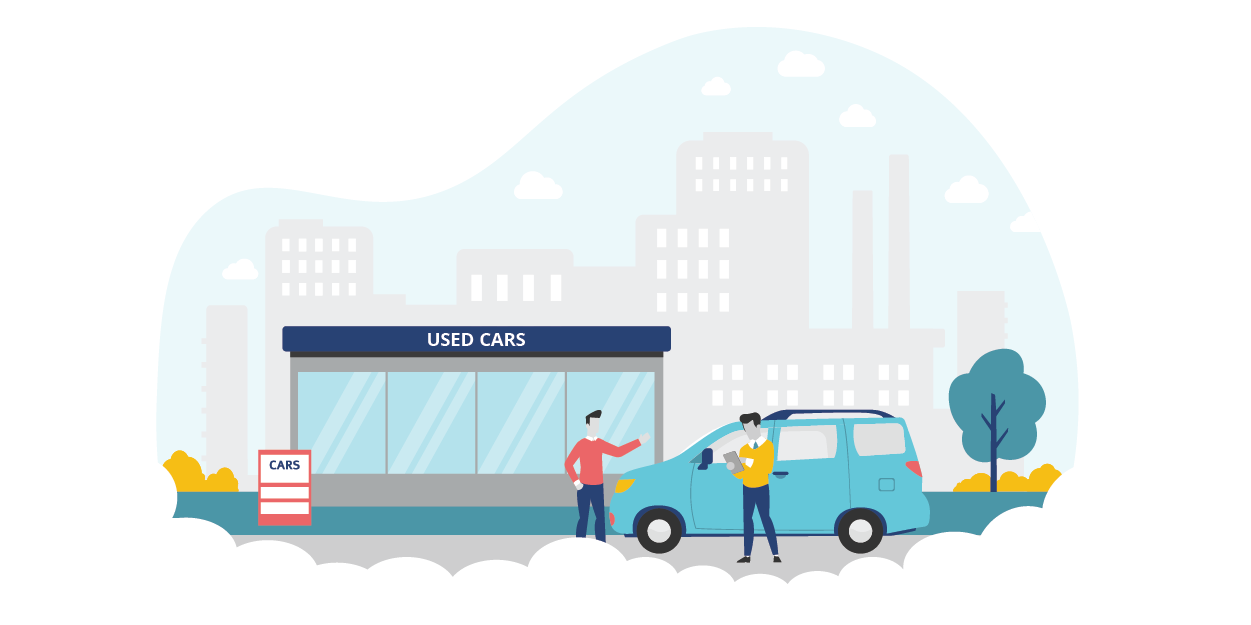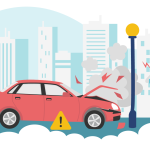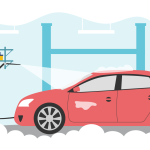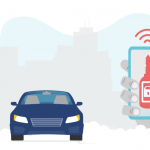5 Tips For Buying a Used Car
June 23, 2022

Looking for a new car, without those new car prices? Getting a used car could be the ideal solution for your budget! Most cars tend to depreciate in value quickly over time, so buying a used car can be a great way to save money—but there’s a tradeoff: more risk on the buyer’s end.
To ensure maximum satisfaction with your used vehicle, it’s important to go into the process prepared. If you’re not careful, you could potentially be hit with unexpected repairs or high insurance costs in the long run.

While the purchasing process for buying a used car is different from buying a brand-new car, it’s not as intimidating as it may seem. To help you out, we’ve put together a list of 5 tips to keep in mind when buying a used car:
1. Take the time to research.
Whenever possible, start researching as early as you can. Giving yourself a good amount of time to get prepared and weigh your options will help you make the best buying decision and avoid getting backed into any corners.
First, you’ll need to decide on your budget—and that doesn’t stop at the initial price tag of the car. Be sure to factor in the costs associated with fuel economy, maintenance and repairs, and insurance premiums over the expected lifespan of the car. For an idea of how much insurance might cost you, contact your broker early on in the process!
Next, think about what you’re looking for in the vehicle itself. Which features are most important to you? Which ones would be nice to have? And which ones could you do without? You won’t necessarily be able to pick and choose features in the same way that you could for a brand-new car, so a bit of flexibility might be needed depending on what’s for sale.
Once you’ve narrowed down vehicle options according to your budget and lifestyle needs, it’s time to dig a little deeper. You can look up specific models to compare reviews from other drivers and get detailed breakdowns on special features, safety ratings, fuel efficiency, average repair costs, and overall performance.
2. Look into your desired vehicle’s history.
So, you’ve found a car you’re interested in and want to investigate further. Even if the seller assures you that the vehicle has never been in any accidents, there might still be a seed of doubt in your mind if they don’t have the official documentation on hand.
Consider using the vehicle identification number (VIN) to get a vehicle history report from a reputable service such as CARFAX Canada. With this report, you can ease your mind, discover any potential issues ahead of time, and get a realistic idea of the value of the used car you’re looking at.
For drivers across southern Alberta and the Greater Toronto Area, the Insurance Bureau of Canada has compiled a database of vehicles reported as flood-damaged and non-repairable. Be sure to check IBC’S VIN Verify Service to make sure you aren’t being defrauded into purchasing a car that has been through a disaster. You can also search up the make and model on Transport Canada’s Motor Vehicles Safety Recalls Database to see if your desired vehicle has been affected by any recalls.
3. Inspect the car thoroughly.
A used car has lived a whole life before you came along—that’s why it’s important not just to get a feel for how the vehicle matches up to your preferences, but also to ensure that there are no major problems before you commit to purchase.
During your inspection, check the following:
- Buckle and unbuckle all seatbelts.
- Open and close all doors, windows, and the trunk.
- Sit in each seat of the car to make sure there’s enough legroom.
- Flash the brake lights, headlights, taillights, high beams, and hazard lights.
- Test the front and back windshield wipers.
- Make sure heating and air conditioning systems are in good shape.
- If applicable, make sure the built-in GPS, radio, Bluetooth, rear-view camera, and any other features are in working order.
- Turn up the stereo system and listen for any audio issues.
- Check the consistency of the tires; all four should be the same type, with similar wear and tear.
- Check the paint job; inconsistencies could indicate that the vehicle has been repainted after a collision.
- Check the odometer to see how much distance the vehicle has travelled, as this can be a useful tool for measuring overall wear and tear. Generally, the lower the mileage, the higher the resale value of the car.
If you want even more reassurance, consider taking your used vehicle to a mechanic for a professional opinion. Although the service will cost you, catching any problems earlier could save you even more money down the line.
4. Take it for a drive.
In preparation for the test drive, get as comfortable as possible by adjusting the seat, steering wheel, and mirror positions as needed. When you’re ready, hit the road and drive just as you normally would on a regular basis. Take it out on the highway, on residential streets, and in a parking lot to test acceleration, maneuverability, and comfort.
In addition, try using any features that you typically would while driving, like cruise control, windshield wipers, radio, or air conditioning, to make sure that the controls are easily reachable. And don’t shy away from asking for additional time to test drive—you want to be completely sure that this is the right car for you before you hand over your hard-earned cash.
5. Ask the right questions.
When in doubt, ask! You’ve done your research, investigated the history of the car, completed a manual inspection, and gone on a test drive—there are only a few loose ends to tie up before the purchase can be completed.
Ask if there were any modifications made to the vehicle by the previous owner(s), since car modifications may have an unexpected effect on your Auto Insurance rates. Find out if the manufacturer’s warranty is still in effect, and if so, have it transferred into your name once the car is yours so that you’ll be protected under it. Confirm that you’ve been shown legitimate documentation for the vehicle, such as the Used Vehicle Information Package (which is mandatory in Ontario).
Lastly, consider negotiating with the seller if you feel that they might be willing to take less than what they originally asked for. Use your judgement based on your inspection and all the research you’ve already done to ensure that you’re getting a fair price in the end.
RELATED: Not So Fast & Furious: Here’s Why You Should Think Twice About Car Modifications
Getting a new car—even if it’s used—is an exciting milestone for anyone! But before you hit the road, you’ll need to be insured. And if you need guidance in finding just the right coverage for your used car, PROLINK is here to help.
As a licensed broker, we’ll shop around on your behalf to ensure you’re getting the best coverage for your unique needs, at the best price possible. With a wide network of insurance providers and over 40 years of experience, you can rely on PROLINK for all things insurance. Connect with us today for a free quote!
PROLINK’s blog posts are general in nature. They do not take into account your personal objectives or financial situation and are not a substitute for professional advice. The specific terms of your policy will always apply. We bear no responsibility for the accuracy, legality, or timeliness of any external content.




